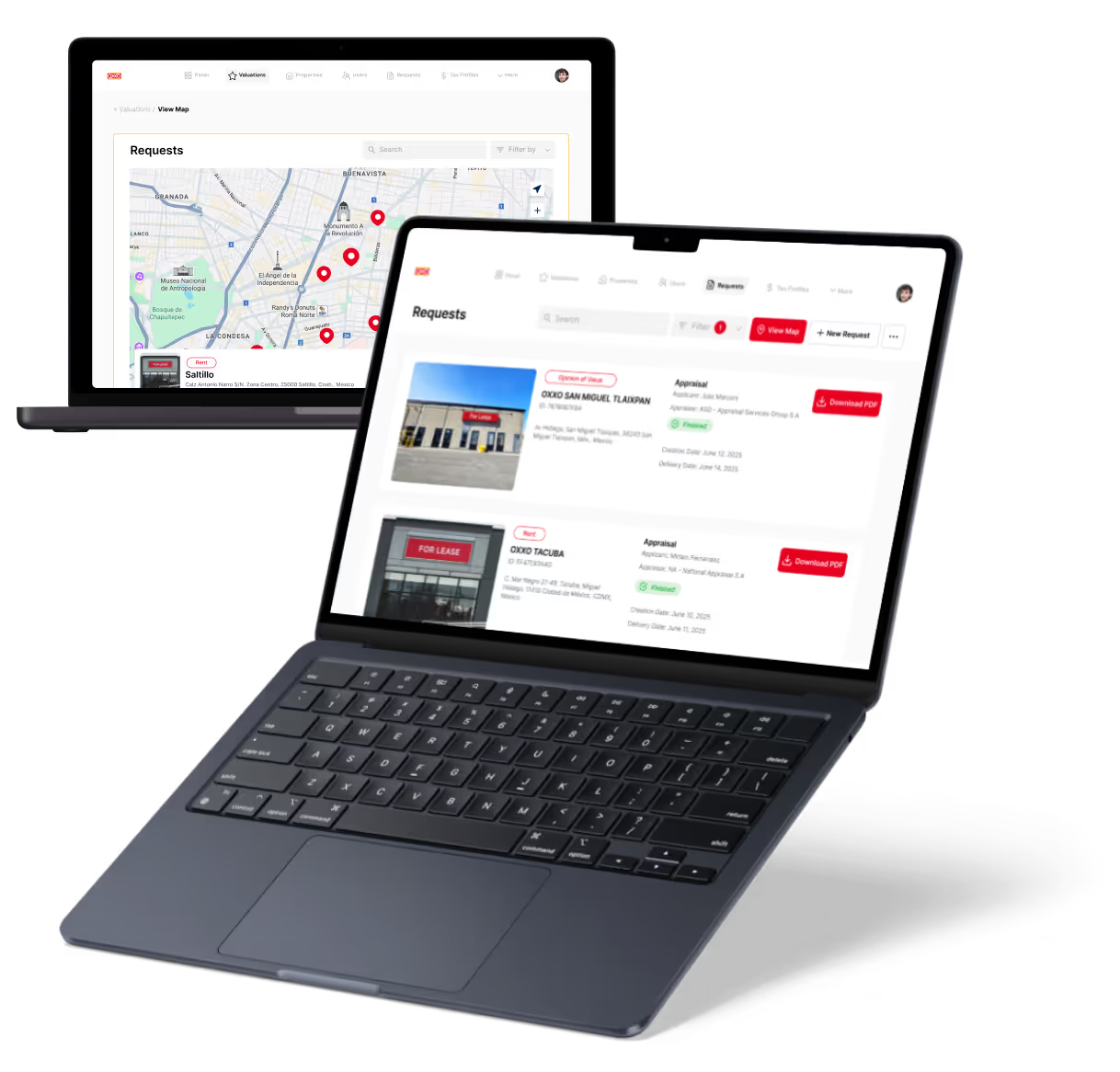Webflow vs Dorik | 10 Factors to Decide the Best One
12 min
read
Compare Webflow vs Dorik on design control, CMS, SEO, AI tools, and ease of use. Find out which no-code builder fits your website goals in 2025
.avif)
Webflow and Dorik both let you build beautiful websites without writing code, but they serve very different users. Webflow powers over 3.5 million websites and is loved by designers for its full visual control and advanced CMS. Dorik, on the other hand, is known for speed and simplicity, used by thousands of creators and startups for clean, easy-to-manage sites.
Whether you're building a custom portfolio, landing page, or blog, the right tool depends on your time, skills, and goals. This guide compares Webflow and Dorik across design flexibility, CMS, SEO, eCommerce, AI features, and more, so you can pick what’s right for you.
Quick Comparison Table - Webflow vs Dorik
1. What’s the core difference between Webflow vs Dorik?
The core difference between Webflow and Dorik is the level of design control and complexity.
Webflow is a powerful no-code tool for designers and developers who want full visual control. It lets you build pixel-perfect websites with custom interactions, CMS, and animations. It’s great for professionals building marketing sites, portfolios, or even full web apps.
Dorik, on the other hand, is a simple, easy-to-use website builder. It offers beautiful templates, fast editing, and all-in-one features like blogging, forms, and memberships. It’s made for beginners, freelancers, and small businesses who want to launch clean websites without learning technical details.
Use Webflow if you want design freedom and advanced features. Choose Dorik if you need a simple website builder that works out of the box with less setup and learning. Both are no-code, but they serve very different user types.
2. Ease of use and learning curve
Let’s begin with how easy each platform is for beginners and non-designers.
Is Webflow easy to learn for non-designers?
Webflow is powerful but not very beginner-friendly at first. Its visual editor works like HTML and CSS, so non-designers may feel overwhelmed. You need to learn layout rules like margins, padding, and breakpoints.
Webflow University provides detailed tutorials that help, but there is still a steep learning curve. Once learned, Webflow becomes very flexible. It’s best for users willing to invest time in learning. Designers and developers who want full control love it, but casual users might find it too complex for quick website projects.
How beginner-friendly is Dorik for fast publishing?
Dorik is extremely beginner-friendly. Its editor is simple and clean, with drag-and-drop blocks that let anyone build a site fast. No design experience is needed. You can pick a template, add your content, and publish in minutes. The interface is clear, and most features are easy to understand without tutorials.
Dorik is perfect for non-technical users, freelancers, or small businesses who just need to launch a clean website quickly. It offers a better first-time experience than Webflow for users who want speed and simplicity without learning design logic.
Read more about:
3. Design flexibility and customization
Now let’s see how much creative control each platform gives you.
How much visual control does Webflow offer?
Webflow gives you full design freedom. You can control every element’s size, spacing, color, animation, and layout. It supports flexbox, grid, and even interactions for hover effects, scroll animations, and more. It feels like using a real design tool, but for the web.
This is ideal for professional designers or developers who want a pixel-perfect layout. You can even export the code if needed. However, this freedom comes with complexity, and new users may struggle. Webflow is perfect if you want full control over how every detail looks and behaves.
Can you fully customize designs in Dorik?
Dorik offers good customization for most use cases, but it’s not as advanced as Webflow. You can edit colors, fonts, spacing, and layout blocks. You can also rearrange sections easily and customize each block’s content. It offers a large number of pre-built components, which helps users save time.
However, you can’t control CSS-level details or create complex animations like in Webflow. Dorik is great for people who want stylish, fast websites without deep customization. It trades full control for ease of use, which is a good balance for most users.
4. CMS and content management
Let’s compare how each platform manages blogs, dynamic content, and more.
What type of content can you manage with Webflow CMS?
Webflow CMS is great for dynamic content. You can create custom collections for blog posts, team profiles, projects, and more. Each collection has fields like text, images, links, and rich text. You can design CMS templates to display each item automatically.
It’s ideal for content-heavy sites that need easy updates. Marketers, bloggers, and developers often use Webflow CMS to manage their content without touching code. It takes a bit to learn, but it gives strong content control and works well with Webflow’s visual builder.
Is Dorik CMS good enough for blogs and simple content?
Yes, Dorik CMS works well for blogs, landing pages, and small sites. You can manage blog posts, team members, and testimonials using its built-in CMS. It includes a basic editor where you add images, text, and categories. The CMS is easy to use and requires no setup.
For personal blogs, company sites, or service pages, Dorik’s CMS is more than enough. However, it’s not as powerful or flexible as Webflow’s CMS for large content systems. It’s best for simple content needs that don’t require complex templates or filtering.
Read more about:
5. SEO tools and performance optimization
Now let’s explore how both platforms help your site rank and load fast.
What SEO features does Webflow offer for advanced users?
Webflow has strong SEO tools. You can edit meta titles, descriptions, slugs, image alt text, and Open Graph settings. It auto-generates sitemaps and allows custom 301 redirects. The code it generates is clean and fast, which helps performance. You can also add schema markup for advanced SEO setups.
Webflow’s hosting uses a global CDN and optimized image delivery. Developers can go deep with technical SEO changes. For teams focused on ranking and performance, Webflow offers one of the best SEO-friendly setups in the no-code world.
Does Dorik support SEO with AI tools and speed?
Yes, Dorik includes SEO basics and some smart tools. You can add meta titles, descriptions, keywords, and slugs. Dorik’s AI assistant can help write SEO-friendly content, which is great for beginners. It also offers fast-loading templates, optimized code, and built-in lazy loading for images.
You can connect Google Analytics and Search Console easily. While it doesn’t support advanced SEO features like structured data, it’s more than enough for small sites, blogs, or local businesses. Dorik gives a fast and SEO-ready setup without the complexity of advanced tools.
6. Integrations and eCommerce
Now let’s see how each platform supports external tools and online selling.
Can you build online stores with Webflow?
Yes, Webflow has built-in eCommerce features. You can add products, manage inventory, customize carts, and create a full checkout flow. It supports Stripe and PayPal for payments. You can also use Webflow CMS to organize product categories and collections.
Webflow gives you full design control over every part of the shopping experience. It’s great for small to mid-sized stores that want a unique layout. For more advanced features like subscriptions or shipping rules, you may need third-party tools or integrations with services like Foxy or Memberstack.
What payment and tool integrations does Dorik offer?
Dorik does not have a full eCommerce system, but it supports payments using tools like Stripe, Gumroad, and Lemon Squeezy. You can embed payment buttons, forms, and checkout links into your site. Dorik also integrates with tools like Google Analytics, Mailchimp, Tally Forms, and Crisp chat. It works well for selling digital products, accepting donations, or offering paid services.
You won’t get cart and checkout flows like Webflow, but Dorik’s setup is easier and faster for solo founders or small teams with simple needs.
Read more about:
7. White-label and client features
Now let’s compare features for agencies and teams working with clients.
Is Webflow good for agency or team projects?
Yes, Webflow is excellent for agencies and client work. You can invite team members, assign roles, and manage projects under different workspaces. Webflow also supports white-label client billing and Editor access, where clients can update content without breaking design.
Agencies can create templates, use CMS collections, and even hand off full control to the client. Webflow’s version control, staging features, and hosting management also help with professional workflows. If you build sites for others, Webflow gives the tools needed for both collaboration and handoff.
Does Dorik support white-labeling and client handoff?
Yes, Dorik offers white-label features on its agency plan. You can remove Dorik branding, use your custom domain for the dashboard, and give clients access to their projects. Clients can log in, update content, and manage their sites without seeing the Dorik name. It also supports team collaboration with shared access.
This setup is great for freelancers or small agencies offering affordable site packages. While not as advanced as Webflow’s tools, Dorik makes client work simple and fast—perfect for users who value ease over depth.
8. AI features for content and SEO
Next, let’s see how each platform uses AI to help speed up content creation and design.
Does Webflow include any AI-powered tools?
Yes, Webflow recently introduced AI features. You can now generate SEO tags, meta descriptions, and content blocks using AI. It also suggests improvements during the design process. These tools are still growing but help speed up workflow and content writing.
However, they don’t replace human design choices. Webflow’s AI is helpful for marketing teams or solo builders who need assistance with SEO and content but still want full design control. It's a bonus layer that supports, not replaces, manual creativity.
How can Dorik’s AI tools help speed up site building?
Dorik’s AI features are focused on content and SEO. You can use the built-in AI writer to generate section text, blog posts, or meta tags. It also helps you write faster with content suggestions based on your inputs. This is especially useful for beginners or non-writers.
Combined with Dorik’s simple layout blocks, the AI assistant helps users publish websites very quickly. For launching personal sites, service pages, or small blogs, Dorik’s AI support reduces time and effort without needing writing or SEO skills.
Read more about:
9. Support and help resources
Let’s check how each platform helps users with guides, support, and community.
What kind of support does Webflow offer?
Webflow has a strong support ecosystem. It includes Webflow University with hundreds of video tutorials, templates, and how-to articles. There’s also a large community forum, active Discord, and email-based support. For premium plans, users get faster responses and priority help.
Webflow also partners with experts for professional services. While there’s no live chat for all users, the educational content is top-tier. If you like learning by video and want deep documentation, Webflow’s support and learning resources are very helpful, especially during the early learning curve.
Is Dorik’s live chat support helpful for beginners?
Yes, Dorik has excellent live chat support. You can ask questions directly from the dashboard and get quick replies. The support team is responsive and helpful, especially for beginners building their first site. Dorik also offers guides, docs, and YouTube tutorials, but live support is where it stands out.
It’s ideal for users who prefer asking questions directly rather than searching through help docs. Dorik’s team is small but very user-focused, which makes it feel more personal than larger platforms like Webflow.
10. Final verdict – Webflow or Dorik?
Let’s wrap up with which tool is better based on your specific needs.
When to choose Webflow over Dorik
Choose Webflow if you want full creative control, advanced CMS, and professional features. It’s great for designers, freelancers, and agencies building custom sites with animations, logic, and SEO tools. If you're okay with a learning curve and want pixel-perfect design, Webflow gives you unmatched freedom.
It also scales well for content-rich websites, marketing teams, or startups that need flexible layouts and dynamic pages. Webflow is ideal when your site needs to stand out visually and support future growth with CMS, eCommerce, or integrations.
When to choose Dorik over Webflow
Choose Dorik if you want to launch quickly without learning complex tools. It’s ideal for founders, creators, and small businesses that need clean, fast websites with zero setup. You get easy templates, built-in CMS, AI writing, and simple payments. Dorik is also perfect for freelancers offering white-label sites.
You won’t get Webflow’s deep design freedom, but you will save time. For simple blogs, personal sites, or service pages, Dorik gives great results fast—with far less effort.
Created on
July 3, 2025
. Last updated on
December 11, 2025
.

FAQs
Is Dorik easier to use than Webflow?
Can I create a blog on both platforms?
Does Webflow support full online stores?
Is Dorik’s AI tool helpful for SEO and content?
Which one is better for client work?
Can I export code from Webflow or Dorik?







%20(Custom).avif)






.avif)

